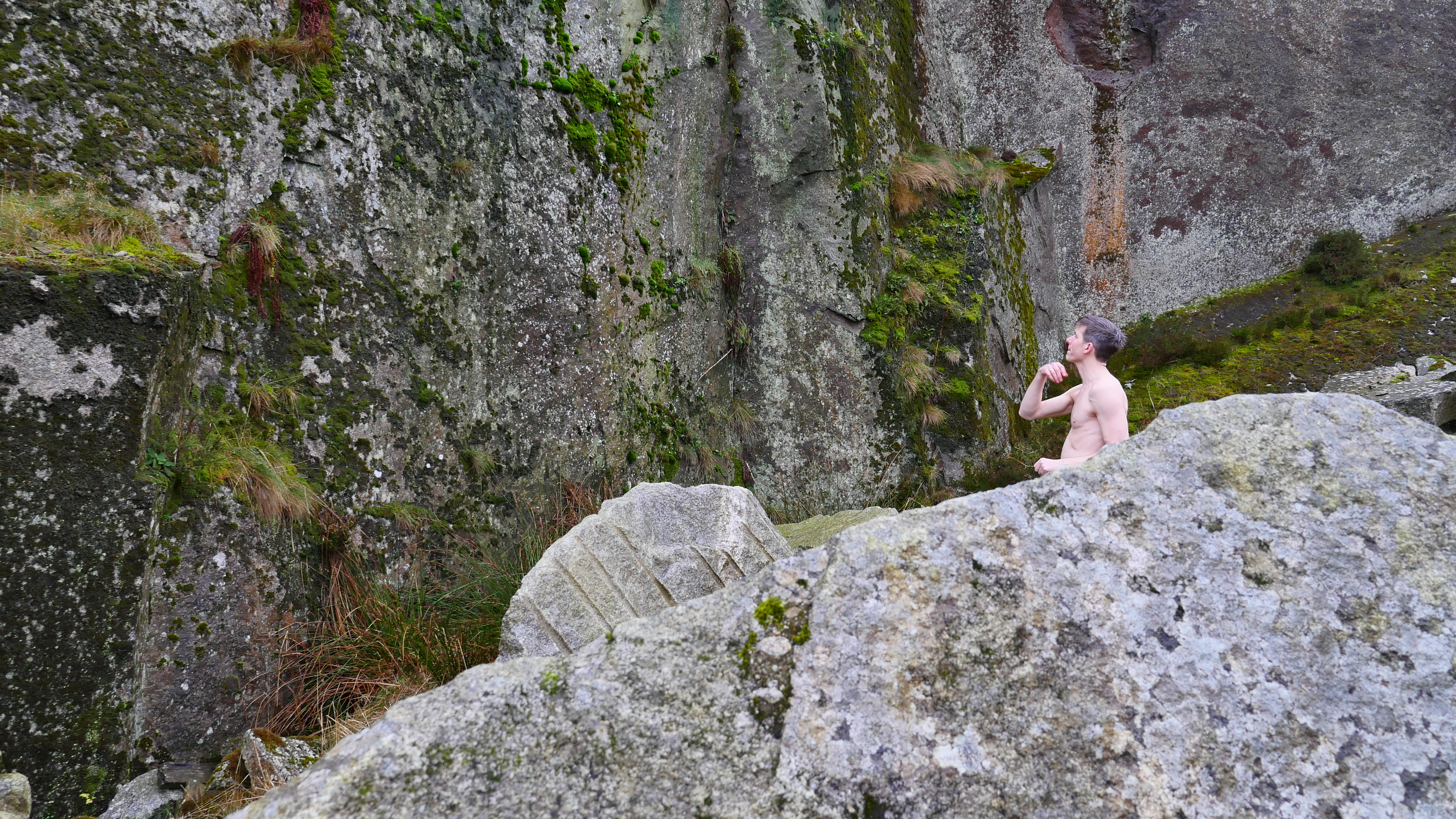
Táim tosnaithe I mbliana ar thionscnamh nua rince dár teideal Dúiche. Dúiche means Hinterland in English. As someone whose creative work has been sensitive to context as material, I’ve always been fond of the phrase an dúiche máguaird and its encompassing ‘round aboutness’. Úsaídeann An Fóclóir Beag an focal máguaird leis an Nádúr a mhíniú: “an saol máguaird seachas mar atá déanta ag an duine (ar nós plandaí, ainmhithe, aibhneacha, cnoic etc.)”. it doesn’t mention language as part of that natural hinterland but following Michael Cronin’s An Ghaeilge agus an Éiceolaíocht/ Irish and Ecology I’ve become interested in how bodies, language and ecology interrelate. And what it means for someone brought up in the Gaeltacht to be dancing.
Dance is often called a universal language – which isn’t really true since, like how we understand bodies, how it is perceived and practised is very culturally specific. I’ve spoken elsewhere about how Irish feels different in my mouth, tá blas diffriúil aici a eagraíonn mo chorp I slite ar leith. Ina theannta san, tá structúr ar leith ag comhréir na Gaeilge – for example, word order in Irish is usually verb-subject-object, while in English it is usually subject-verb-object agus n’fheadar an bhfuil tionchar ag an fhoth-chóraghrafadóireacht san ar an slí a chumaim rince? I have no doubt that growing up speaking Irish gave me súil eile, dearcadh eile ar an saol, an opening to the possibility of perspectives beyond the hegemony of English.
D’ullmhaigh an dá-theangachas mé don aiteachas but as I became a teenager and young adult, I wasn’t able to explore all of my identity through Irish. My sexuality and my dancing both took their expression in London in English. Níorbh ionainn mo theanga máthair agus teanga mo leannáin. Is cuimhin liom nuair a thosnaigh Ríonach Ní Néill agus mé fhéin ag cleachtadh agus ag múineadh an rince comhaimseartha trí Ghaeilge, there was no resource to figure out what words we should use in Irish to describe the movements we wanted to teach. There wasn’t a word for choreographer in the dictionary so we made one up – córaghrafadóir – following the form for photographer grianghrafadóir. I used that happily for years until I noticed that tearma.ie had decided the translation was cóiréagrafaí. Ar chóir dom glacadh leis an téarma nua? Táim ag cloí go fóill le mo rogha, go háirithe mar go bhfuil blas níos fearr air ó dheas, i m’thuairimse.


Post a Comment